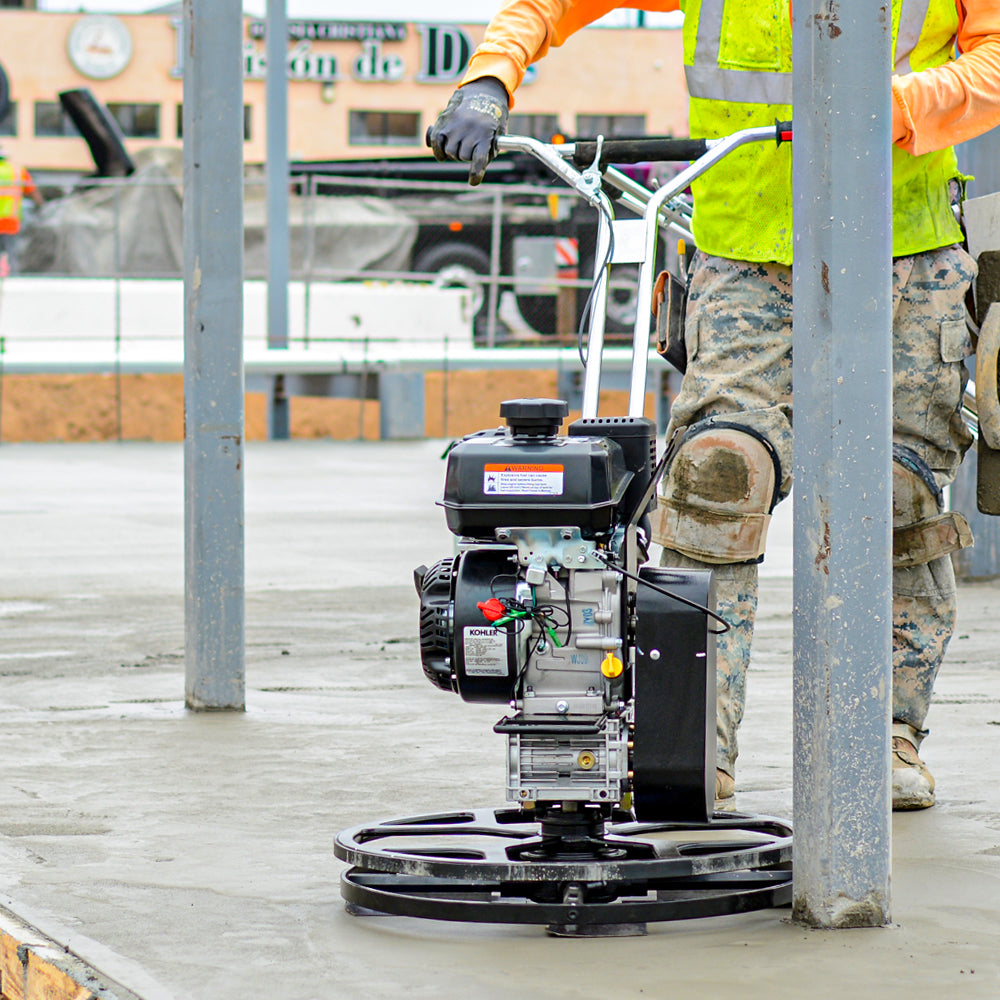In the world of construction, precision and efficiency are crucial elements for achieving exceptional results. When it comes to concrete finishing, the choice of equipment can significantly impact the final outcome of a project. Power trowels, also known as troweling machines, play a pivotal role in creating smooth and durable concrete surfaces. However, selecting the right power trowel size for your concrete project is a decision that requires careful consideration. This blog aims to guide you through the process of choosing the optimal power trowel size to ensure your project's success.
1. Understanding Power Trowel Sizes
Power trowels come in a range of sizes, each designed to accommodate different project requirements. The size of a power trowel is determined by the diameter of its blades or pans. Common sizes include 24 inches, 36 inches, 46 inches, and even larger variants. The right size will depend on factors such as the size of the area to be finished and the type of concrete mix being used.
2. Matching Size to Project Scale
One of the primary considerations when choosing a power trowel size is the scale of your project. For smaller projects, such as residential driveways or sidewalks, a smaller trowel with a 24-inch or 36-inch diameter might be appropriate. Larger projects, such as industrial floors or commercial pavements, may necessitate the use of larger trowels, such as those with 46-inch blades.
3. Maneuverability and Accessibility
In addition to project scale, consider the accessibility and maneuverability of the area you're working on. Tight corners, narrow passages, and confined spaces might require a smaller power trowel that can navigate with ease. Choosing a size that can effectively cover the available space without causing damage to the surroundings is essential for a successful concrete finishing process.
4. Blade Overlap and Efficiency
Blade overlap is a critical factor that affects the efficiency and quality of the finishing process. Smaller power trowels may require more passes to achieve full coverage and proper compaction. Larger trowels can cover more ground in fewer passes, which can significantly reduce the time and labor required to complete the job.
5. Concrete Mix and Finish Type
The type of concrete mix being used and the desired finish play a role in determining the appropriate power trowel size. More viscous or fast-setting concrete mixes might require a larger trowel to achieve proper compaction and finish. Additionally, if you're aiming for a high-gloss polished finish, a larger power trowel with multiple blades might be more suitable.
6. Operator Experience and Comfort
Consider the experience level of the operator who will be using the power trowel. Smaller trowels are generally easier to handle and are suitable for operators who may be less experienced. Additionally, the ergonomic design of the trowel's handle and controls can impact the operator's comfort and overall efficiency.
7. Project Timelines and Deadlines
The size of the power trowel can influence project timelines. Larger trowels can cover larger areas more quickly, potentially reducing the time required to complete the finishing process. If you're working on a tight schedule or facing project deadlines, choosing a size that aligns with your timeline goals is essential.
In the world of construction, the adage "size matters" holds true when it comes to choosing the right power trowel for your concrete project. The optimal size will depend on factors such as the project scale, maneuverability requirements, concrete mix, finish type, operator experience, and project timelines. By carefully assessing these variables and matching them to the appropriate power trowel size, you can ensure that your concrete finishing process is efficient, effective, and results in smooth, durable, and aesthetically pleasing surfaces.










